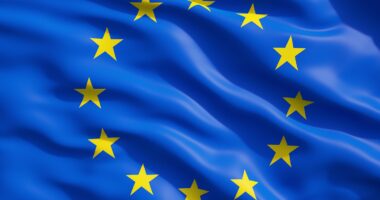Sustainability: Which Pharma Companies Rank the Highest?
Roche took the top position in a recently released measure of sustainability performance, with Amgen, GlaxoSmithKline, and Baxter among other companies making the grade.
The annual rankings of the Dow Jones Sustainability Index (DJSI), which provides an integrated assessment of economic, environmental and social criteria, to rank companies’ performance in sustainability, place Roche on top in the pharma industry. How did the other pharma companies fare in the DJSI and in other metrics measuring sustainability. DCAT Value Chain Insights takes an inside look.
The annual DJSI, a measure of sustainability was released last month, marking the 15-year anniversary of the DJSI. Launched in 1999, the DJSI World is a global index to track the financial performance of the leading sustainability-driven companies worldwide based on an analysis of financially material economic, environmental, and social factors.
For the sixth consecutive year, Roche was recognized by the DJSI as the group leader in sustainability within the pharmaceuticals, biotechnology and life sciences Industry. This places Roche among the top 10% of companies across all surveyed industries. Inclusion in the DJSI is based on an in-depth analysis of economic, social and environmental performance, assessing issues such as corporate governance, stakeholder engagement, risk management, supply-chain standards, and labor practices. The DJSI has become a key reference for investors who integrate sustainability considerations into their portfolios.
In this year’s DJSI assessment, Roche received the highest scores in the industry in several areas. This included how Roche manages customer relationships, supply-chain management as well as how the company helps to address healthcare burden through the value of its products and services. Roche also scored the highest marks in nearly every area of employee engagement, including developing employees, respecting human rights, and attracting and retaining good talents.
In 2009, Roche introduced a number of five-year corporate goals along with key performance indicators to measure progress. Among these, Roche introduced a diversity objective to increase the percentage of women in key positions by at least 50% as well as an energy-efficiency goal of reducing energy consumption and increasing energy efficiency by 10% by the end of 2014. Roche already reached the diversity goal by the end of 2013, one year ahead of schedule, and the energy target at the end of 2012, two years ahead of schedule. The company is working on new sustainability goals for inclusion into Roche’s next five-year corporate goals. In addition, as access to healthcare is an issue in many parts of the world, Roche is actively working with governments, healthcare professionals, non-governmental organizations, and other organizations with over 100 initiatives globally to improve access to our medicines and diagnostics.
Additionally, for the twelfth consecutive year, Roche has been included in the FTSE4Good Index Series, which measures the performance of companies that meet globally recognized corporate responsibility standards, and has consistently been recognized as one of the best places to work for around the world.
In looking at other companies, Amgen and GlaxoSmithKline were added to the DSJI this year. Also, Baxter, Bayer, and Novo Nordisk are three pharmaceutical companies that were named to the DJIS this year, making them the only pharmaceutical companies to be on the list for the 15 years that the DJSI has been in place.
The DJSI, which is compiled with the RobecoSAM, an investment specialist in sustainability investing, created a new criterion, tax strategy in this year’s index,to address the growing risks relating to aggressive taxation policies. Aggressive and nontransparent tax optimization strategies can pose financial, operational and reputational risks for multinational companies. The three new questions assess whether or not companies have clearly defined tax policies that guide their approach to taxation, how detailed companies report on taxes in the countries and regions in which they operate and whether or not companies are aware of potential business and financial risks related to taxes.
Also, this year, the social and reporting criteria were opened up to companies, allowing them to fill in information relating to their public reporting on the environmental and social issues that are most material to them. The “materiality” question was updated to focus on
whether or not companies clearly define their most material sustainability issues and how these link to their business objectives. The “quantitative indicators” question was updated to assess what indicators companies are using to report on these material issues, whether or not targets exist and whether companies are reporting on the progress toward these targets.
The human capital criterion was redesigned for 2014 in order to better capture how companies are measuring the success of their human capital development programs. Specifically, the criterion aims to identify whether or not companies are able to measure a return on their investment, ensuring that expenditures in these areas are being efficiently managed and are having the desired positive benefits for the company.
For selected questions in the occupational health and safety and talent attraction and retention criteria, RobecoSAM has implemented a new scoring approach to supplement the existing approach used. Instead of measuring only a company’s own improvement over time, for example, its Lost Time Injury Frequency Rate (LTIFR), RobecoSAM now assesses the company’s performance against other companies in the industry, identifying those companies that are best-in-class in these areas. To do so, RobecoSAM has conducted analysis on industry data collected over the past years.





